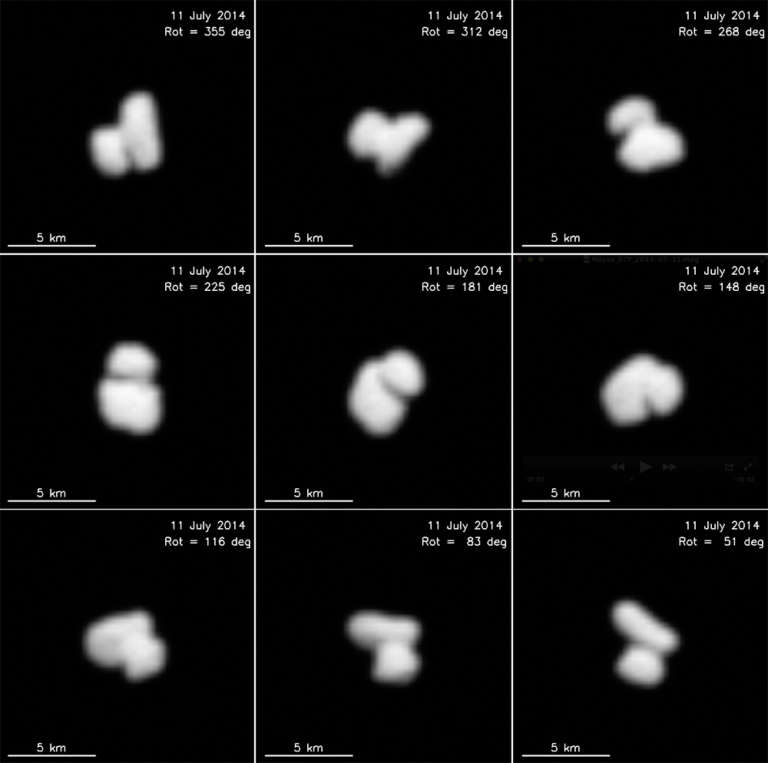Emily Lakdawalla • Jul 15, 2014
Quick Rosetta update: Churyumov-Gerasimenko is a contact binary!
I'm just back from vacation and struggling to catch up but I could not wait to post these amazing new images of comet Churymov-Gerasimenko from Rosetta. The nucleus of the comet is clearly a contact binary -- two smaller (and unequally sized object) in close contact. The CNES page where this photo was released says the whole nucleus measures 4 by 3.5 kilometers, in good agreement with Hubble and Spitzer estimates. Philippe Lamy is quoted as estimating that the two components would have come into contact at a relative speed of about 3 meters per second in order to stick together in this way.

Wow, wow, wow. I can't wait to get closer!
This unusual shape could present a navigational challenge for the Philae lander team. The CNES release quotes Philae navigator Eric Jurado as saying that "navigation around such a body should not be much more complex than around a nucleus of irregular spherical type, but landing the Philae probe [scheduled for November 11], however, could be more difficult, as this form restricts potential landing zones."
I'm at the New Horizons science team meeting right now and have had great fun showing these pictures to gobsmacked space scientists. Naturally, they're all trying to figure out what to call its shape. Alex Parker came up with the clearly best answer:
.@elakdawalla Contact binary? Anvil? Boot? No, the morphology is clear: Churyumov-Gerasimenko is a rubber duckie. pic.twitter.com/AqtsXqQtVj
— Alex Parker (@Alex_Parker) July 15, 2014
Let’s Go Beyond The Horizon
Every success in space exploration is the result of the community of space enthusiasts, like you, who believe it is important. You can help usher in the next great era of space exploration with your gift today.
Donate Today

 Explore Worlds
Explore Worlds Find Life
Find Life Defend Earth
Defend Earth

